

Indonesia’s journey towards an energy transition, particularly with the adoption of electric vehicles (EVs), has been met with a fair share of skepticism. Concerns about the availability of charging stations, the cost-efficiency of EVs, and the overall practicality of long-distance travel in an EV have loomed large. However, our recent road round trip from Jakarta to Semarang which is around 400km one way pleasantly surprised us, casting away many of those doubts. Here’s a recount of our electrifying adventure that proved the naysayers wrong.
Charging stations aplenty from Jakarta to Semarang
Bird eye view of several charging stations by the National Electric Company along the toll roads

Starting at 5:30am from our office with a fully charged battery and a sense of adventure, we were ready to begin. Mind you, this was our first time taking our EV, a Hyundai Ioniq 5, to a trip this far and long so we were cautiously optimistic. Leaving at the break of dawn has its perks namely avoiding the notorious Jakarta traffic jam. Whizzing past several rest areas, we were able to spot almost if not all had the electric sign logos on their billboards showing EV charging station availability. Fortune was on our side.
With rest areas aplenty by the toll roads, our first leg of the journey took us to the midpoint at the KM 228A rest area. We covered 243 km in under 3 hours at 80-110 km/h with a battery life of 50% remaining. Upon first glance, the charging stations were clear to locate and readily available with no lines. We charged 35,77 kWh for Rp 96,000 in just 54 minutes – the perfect amount of time for a leisurely breakfast.
Jakarta to our first charging station rest area

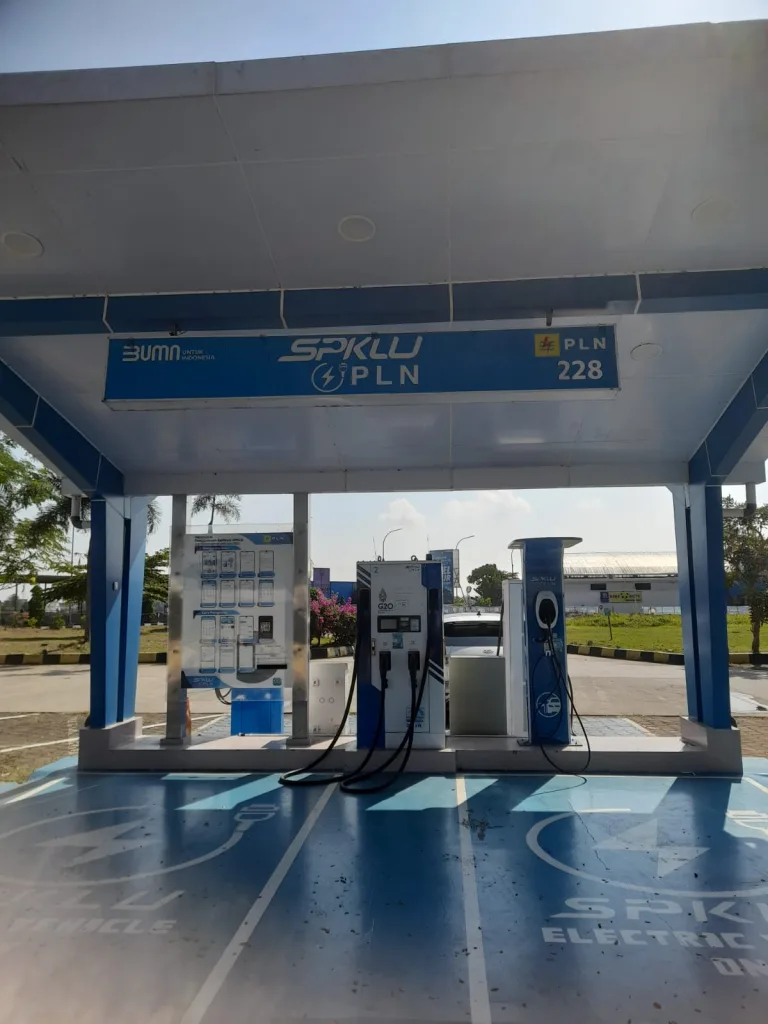
Location: SPKLU KM 228A rest area
By 10am, we were back on the road and reached Semarang by 12pm. This leg of the trip covered 201 km and took around 2 hours and 14 minutes. Traffic thinned out at this point and we were able to speed up to 140 km/h in the hot weather, leaving the battery at 41%.
Our next pit stop was at the PLN office in Semarang, where we juiced up 47,80 kWh for Rp 130,000 in 59 minutes. This charging station went above and beyond with its offerings including a lounge with full air conditioning, television, lounge chairs, and a coffee vending machine. With free amenities such as these, road tripping has never felt so easy.
Luxury at its finest in an EV charging station out of all places



Location: SPKLU PLN UID Central Java & DIY
All recharged both body and vehicle, we headed to the Padma Hotel to situate for the night. When parking, the hotel lot itself offered 2-3 AC type charging stations and several other EV cars were also at the ready to charge. It appears that EV cars are continuing to grow its interest even all the way in Semarang.
We spent the next day exploring the city. For readers who have never been, Semarang is the capital and largest city of Central Java, rich with history of being a major port during the Dutch colonial era. Walking around Old Town, well-preserved Dutch colonial buildings and antique shops lined the streets transporting you back in time. Its historical port has made Semarang to be a melting pot of Chinese, Indian Arab, and European culture as well, lending an abundant variety of charm and heritage on every street corner.
Gorgeous historical charm of Semarang
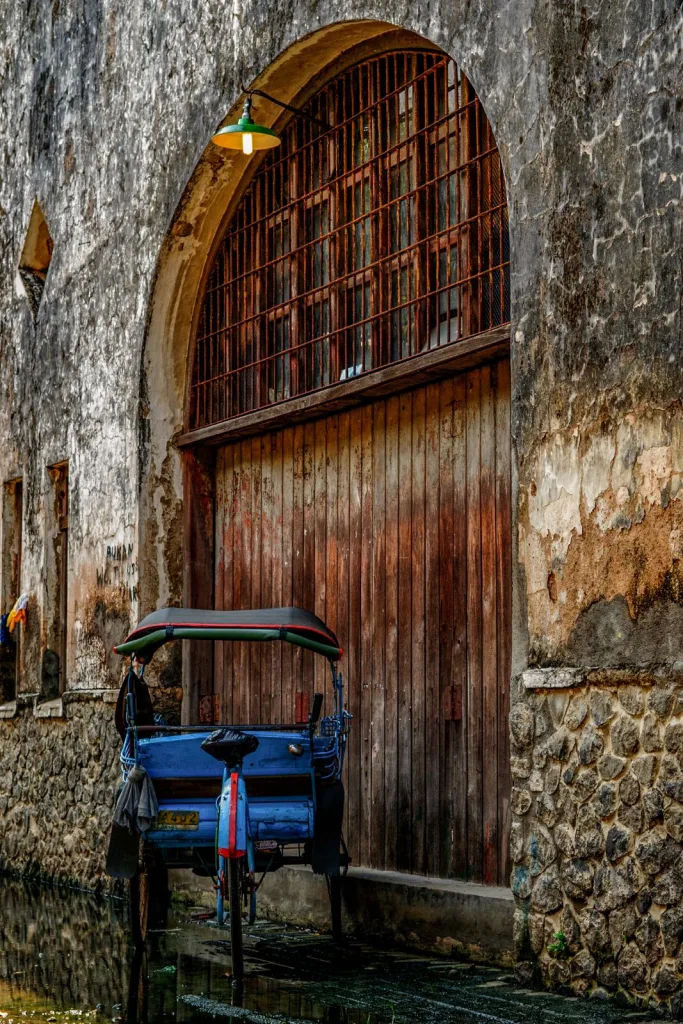
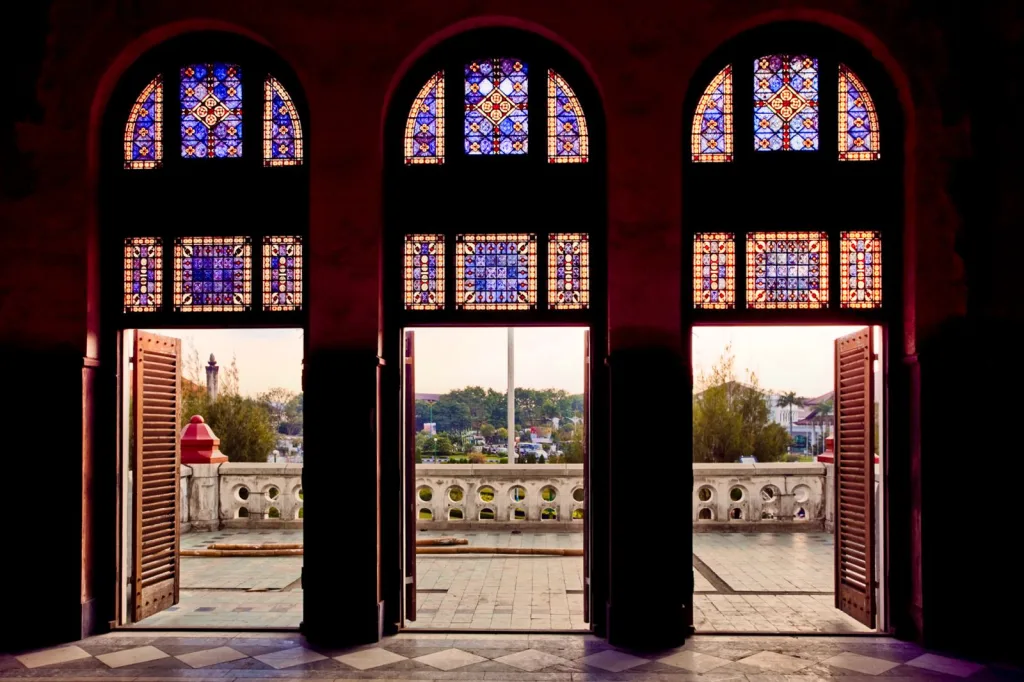


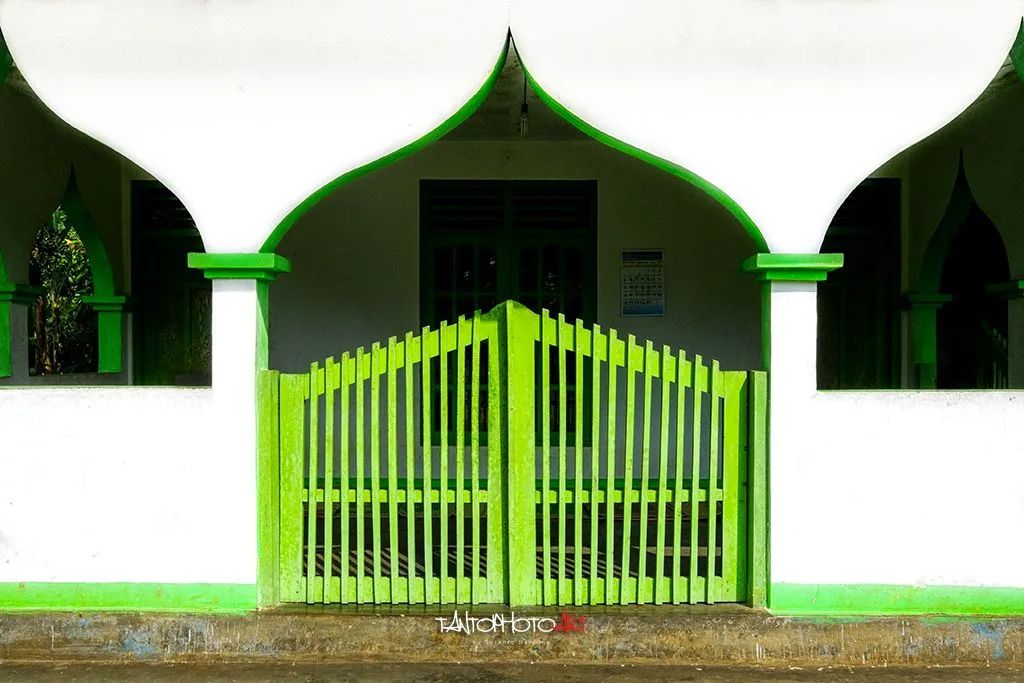


Photo credits: IG @sutanto.harsono and Wuddy Warsono
We headed to the city center for lunch and were greeted with a plethora of delicious local cuisine at the D’Kambodja Heritage restaurant. With its location being a cultural heritage building, we found that the interior blended Indonesian Dutch Chinese architecture lended a refreshing revitalized modern twist. Javanese ornaments and colorful flowers dripped from the ceiling, bringing a vibrant atmosphere to complement the “buffet style” of local dishes that will leave your mouth watering.
A feast of colors for the eyes and stomach


The D’Kambodja Heritage restaurant was opened by Anne Avantie, famed fashion designer who modernized the kebaya (traditional Indonesian long sleeve garment).
Our hunger for local eats and thirst for history appeased, we headed to meet with local businesses. Having spoken with those in various sectors, we found that businesses in Central Java is thriving. This is largely due to the relocations of many factories from West Java into the central region, driven mainly from a desire to capitalize on the region’s lower wages. We had the opportunity to also visit the Grand Batang City, the new industrial park for infrastructure development. Although the area is still under construction, the potential for growth is evident. Tangible growth can be seen in Central Java through these new businesses and initiatives, promising an exciting economic boom.
It was with this exciting sentiment that we made our way to one last charging station before starting our journey back to Jakarta. This rest area costing Rp 95,000 for 34.5 kWh and took 53 minutes to fully charge. Once again, easy to find and locate with no lines to wait behind. The premises themselves are clean and charging features easy to navigate ourselves.
Laying the groundwork: new industrial structures in the making



First picture: Alderon Factory (IMPC group)
Second and third picture: ongoing structures being built
It was with this exciting sentiment that we made our way to one last charging station before starting our journey back to Jakarta. This rest area costing Rp 95,000 for 34.5 kWh and took 53 minutes to fully charge. Once again, easy to find and locate with no lines to wait behind. The premises themselves are clean and charging features easy to navigate ourselves.
Our last pit stop before heading back home

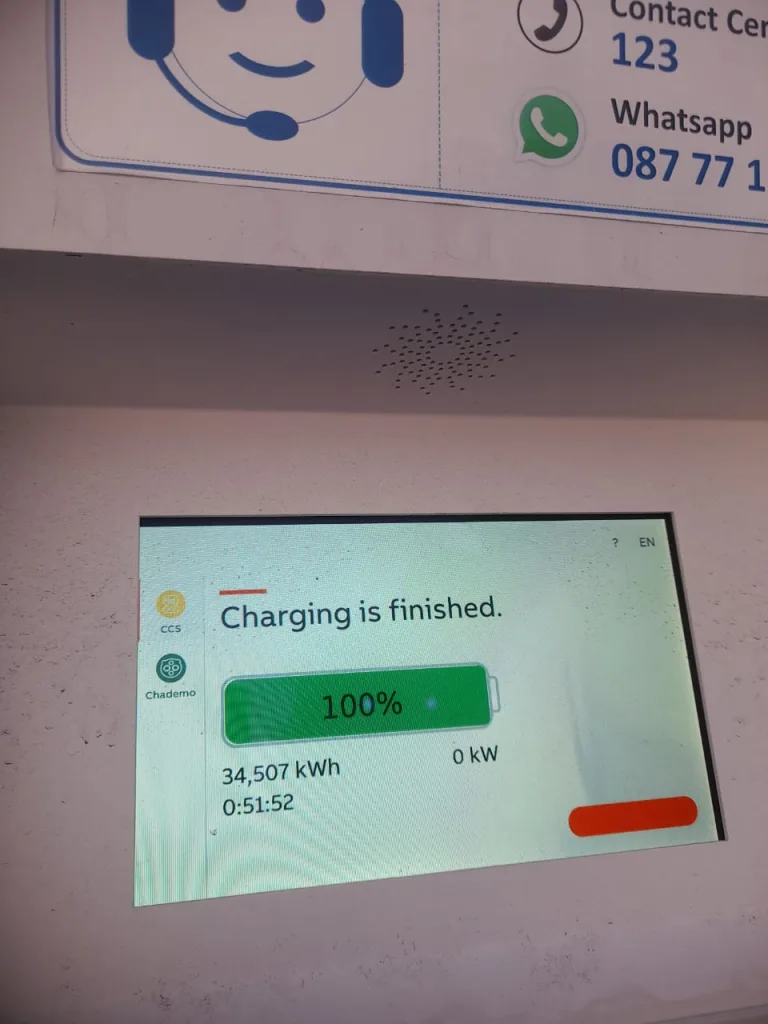
Location: SPKLU KM 360 B Toll Batang – Semarang rest area
The total trip from Jakarta to Semarang and back roughly covered 900 km, which only needed 3 pit stops to charge the car and were a breeze to locate. At an average cost of Rp 2,727 per kWh, we spent a total of Rp 321,966 to and back. Compared to a gas car, we estimate it would have roughly costed around a whopping Rp 1,106,250 for the same distance. Our wallets were crying in relief.
Electric cars are a win for your wallet


Semarang offered convenient charging options, including the Padma Hotel’s AC stations and numerous AC and DC stations along the toll roads. We counted around 9-10 EV charging stations between Jakarta and Semarang, none of which were crowded. Should EV interest surge, we do think there would be a growing need for more charging stations. This trip is also a testament proving that EVs are not only cost-effective but also comparable in travel time to gasoline cars. EVs are not only kind to the planet but also to the pocket, matching gasoline cars in travel time while delivering significant savings. With this electrifying adventure, the future of travel is bright, efficient, and definitely more affordable.
Drive electric, save green: both the planet and your wallet will thank you!
Tara Mulia
Admin heyokha
Share
Indonesia’s journey towards an energy transition, particularly with the adoption of electric vehicles (EVs), has been met with a fair share of skepticism. Concerns about the availability of charging stations, the cost-efficiency of EVs, and the overall practicality of long-distance travel in an EV have loomed large. However, our recent road round trip from Jakarta to Semarang which is around 400km one way pleasantly surprised us, casting away many of those doubts. Here’s a recount of our electrifying adventure that proved the naysayers wrong.
Charging stations aplenty from Jakarta to Semarang
Bird eye view of several charging stations by the National Electric Company along the toll roads

Starting at 5:30am from our office with a fully charged battery and a sense of adventure, we were ready to begin. Mind you, this was our first time taking our EV, a Hyundai Ioniq 5, to a trip this far and long so we were cautiously optimistic. Leaving at the break of dawn has its perks namely avoiding the notorious Jakarta traffic jam. Whizzing past several rest areas, we were able to spot almost if not all had the electric sign logos on their billboards showing EV charging station availability. Fortune was on our side.
With rest areas aplenty by the toll roads, our first leg of the journey took us to the midpoint at the KM 228A rest area. We covered 243 km in under 3 hours at 80-110 km/h with a battery life of 50% remaining. Upon first glance, the charging stations were clear to locate and readily available with no lines. We charged 35,77 kWh for Rp 96,000 in just 54 minutes – the perfect amount of time for a leisurely breakfast.
Jakarta to our first charging station rest area


Location: SPKLU KM 228A rest area
By 10am, we were back on the road and reached Semarang by 12pm. This leg of the trip covered 201 km and took around 2 hours and 14 minutes. Traffic thinned out at this point and we were able to speed up to 140 km/h in the hot weather, leaving the battery at 41%.
Our next pit stop was at the PLN office in Semarang, where we juiced up 47,80 kWh for Rp 130,000 in 59 minutes. This charging station went above and beyond with its offerings including a lounge with full air conditioning, television, lounge chairs, and a coffee vending machine. With free amenities such as these, road tripping has never felt so easy.
Luxury at its finest in an EV charging station out of all places



Location: SPKLU PLN UID Central Java & DIY
All recharged both body and vehicle, we headed to the Padma Hotel to situate for the night. When parking, the hotel lot itself offered 2-3 AC type charging stations and several other EV cars were also at the ready to charge. It appears that EV cars are continuing to grow its interest even all the way in Semarang.
We spent the next day exploring the city. For readers who have never been, Semarang is the capital and largest city of Central Java, rich with history of being a major port during the Dutch colonial era. Walking around Old Town, well-preserved Dutch colonial buildings and antique shops lined the streets transporting you back in time. Its historical port has made Semarang to be a melting pot of Chinese, Indian Arab, and European culture as well, lending an abundant variety of charm and heritage on every street corner.
Gorgeous historical charm of Semarang







Photo credits: IG @sutanto.harsono and Wuddy Warsono
We headed to the city center for lunch and were greeted with a plethora of delicious local cuisine at the D’Kambodja Heritage restaurant. With its location being a cultural heritage building, we found that the interior blended Indonesian Dutch Chinese architecture lended a refreshing revitalized modern twist. Javanese ornaments and colorful flowers dripped from the ceiling, bringing a vibrant atmosphere to complement the “buffet style” of local dishes that will leave your mouth watering.
A feast of colors for the eyes and stomach


The D’Kambodja Heritage restaurant was opened by Anne Avantie, famed fashion designer who modernized the kebaya (traditional Indonesian long sleeve garment).
Our hunger for local eats and thirst for history appeased, we headed to meet with local businesses. Having spoken with those in various sectors, we found that businesses in Central Java is thriving. This is largely due to the relocations of many factories from West Java into the central region, driven mainly from a desire to capitalize on the region’s lower wages. We had the opportunity to also visit the Grand Batang City, the new industrial park for infrastructure development. Although the area is still under construction, the potential for growth is evident. Tangible growth can be seen in Central Java through these new businesses and initiatives, promising an exciting economic boom.
It was with this exciting sentiment that we made our way to one last charging station before starting our journey back to Jakarta. This rest area costing Rp 95,000 for 34.5 kWh and took 53 minutes to fully charge. Once again, easy to find and locate with no lines to wait behind. The premises themselves are clean and charging features easy to navigate ourselves.
Laying the groundwork: new industrial structures in the making



First picture: Alderon Factory (IMPC group)
Second and third picture: ongoing structures being built
It was with this exciting sentiment that we made our way to one last charging station before starting our journey back to Jakarta. This rest area costing Rp 95,000 for 34.5 kWh and took 53 minutes to fully charge. Once again, easy to find and locate with no lines to wait behind. The premises themselves are clean and charging features easy to navigate ourselves.
Our last pit stop before heading back home


Location: SPKLU KM 360 B Toll Batang – Semarang rest area
The total trip from Jakarta to Semarang and back roughly covered 900 km, which only needed 3 pit stops to charge the car and were a breeze to locate. At an average cost of Rp 2,727 per kWh, we spent a total of Rp 321,966 to and back. Compared to a gas car, we estimate it would have roughly costed around a whopping Rp 1,106,250 for the same distance. Our wallets were crying in relief.
Electric cars are a win for your wallet


Semarang offered convenient charging options, including the Padma Hotel’s AC stations and numerous AC and DC stations along the toll roads. We counted around 9-10 EV charging stations between Jakarta and Semarang, none of which were crowded. Should EV interest surge, we do think there would be a growing need for more charging stations. This trip is also a testament proving that EVs are not only cost-effective but also comparable in travel time to gasoline cars. EVs are not only kind to the planet but also to the pocket, matching gasoline cars in travel time while delivering significant savings. With this electrifying adventure, the future of travel is bright, efficient, and definitely more affordable.
Drive electric, save green: both the planet and your wallet will thank you!
Tara Mulia
Admin heyokha
Share







